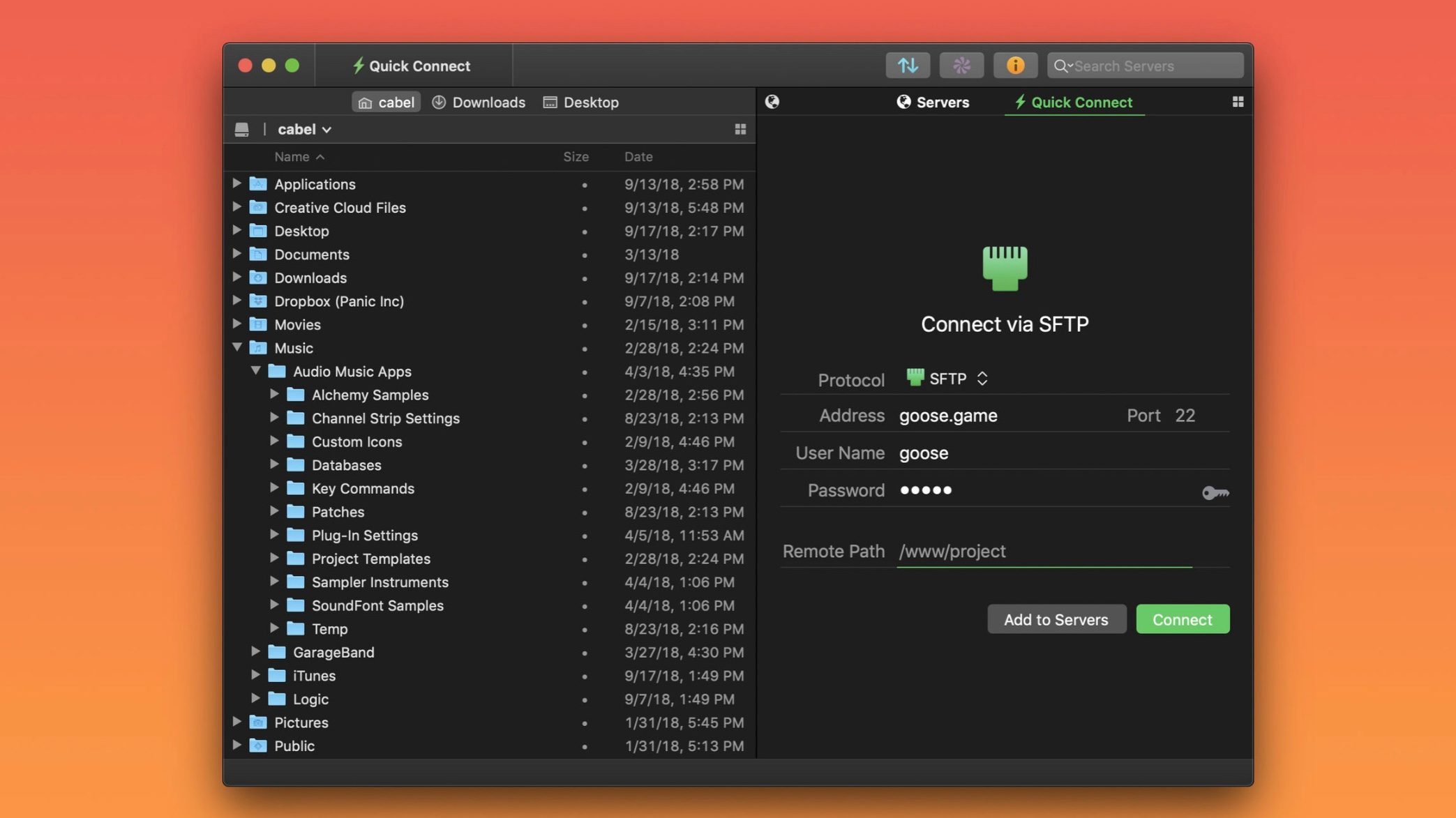

On many LC production machines, a parallel FTP client (PFTP) is now the default, and parallel transfers occur automatically when they are possible. Standard FTP commands, as well as server replies and error codes, are easily searched online and are therefore not in this guide.
#Transmit ftp user guide how to#
This manual explains how to run FTP and shows a typical FTP session. If you prefer to FTP using a graphical user interface, then run Hopper on any LC production machine and select FTP from Hopper's Connect menu. For an alternative file-transfer tool (that offers special services beyond the basic FTP interface and that transfers to or from storage), see the HSI manual and the HTAR Reference Manual. Users whose primary interest in FTP is as an interface to LC's High Performance Storage System (archival file storage) may want to consult the Using LC Archival Storage for helpful comparisons. LC users with special file-transfer needs (such as for batch-oriented command files, extensive tracking of each transfer, or persistent transfers if network problems arise) may prefer to use the NFT file-transfer tool to move files among LC machines.

Use of standard TCP/IP network protocols to move files between machines.FTP involves a local client (software you execute to send or receive files) and a remote server (software elsewhere that responds to instructions from your client to accept or deliver files). FTP (File Transfer Protocol) is an industry-standard protocol and user interface for transferring files between computer systems by means of a series of interactive commands.


 0 kommentar(er)
0 kommentar(er)
